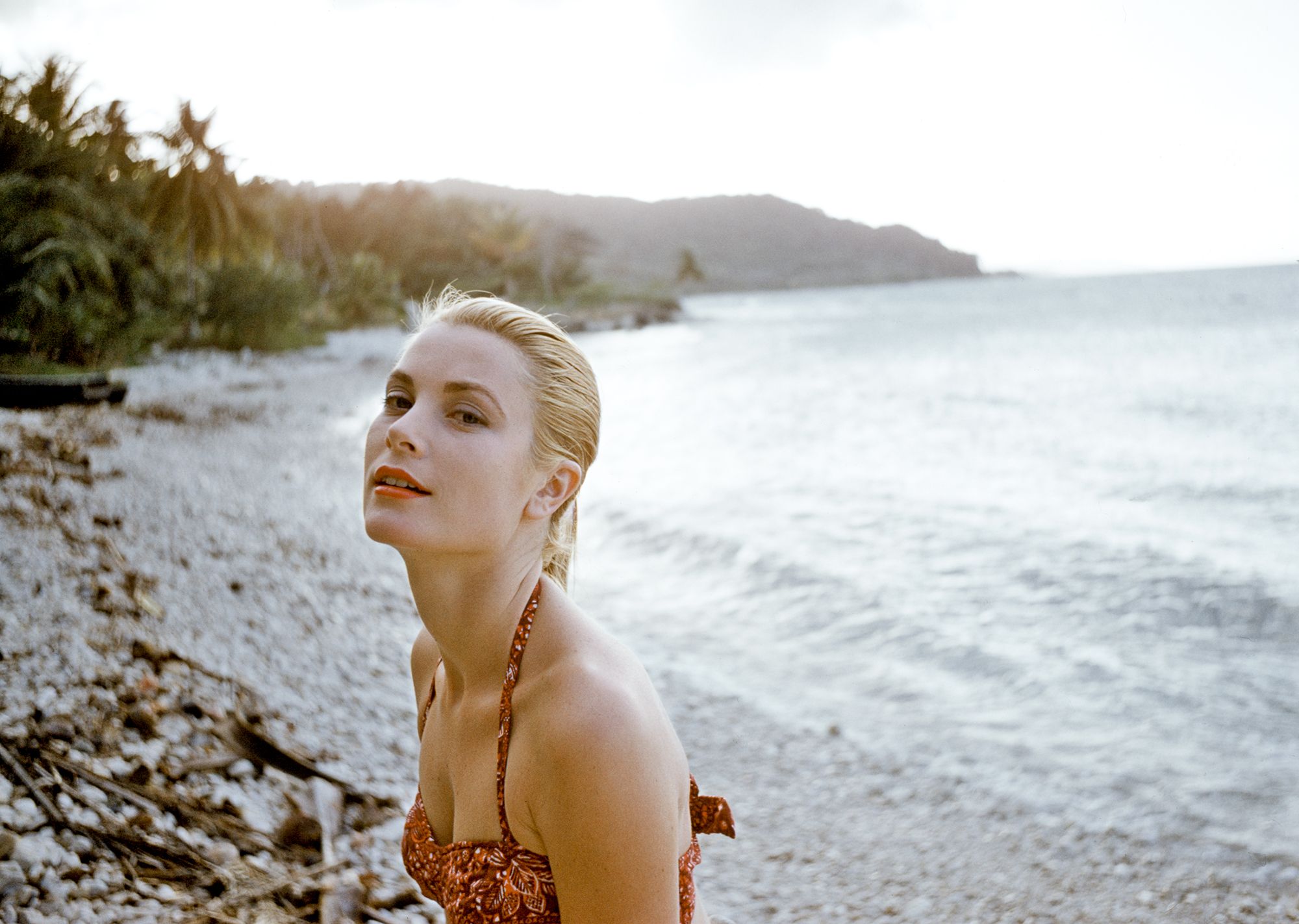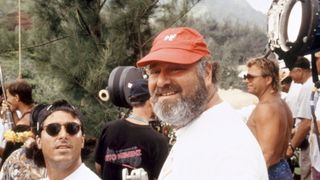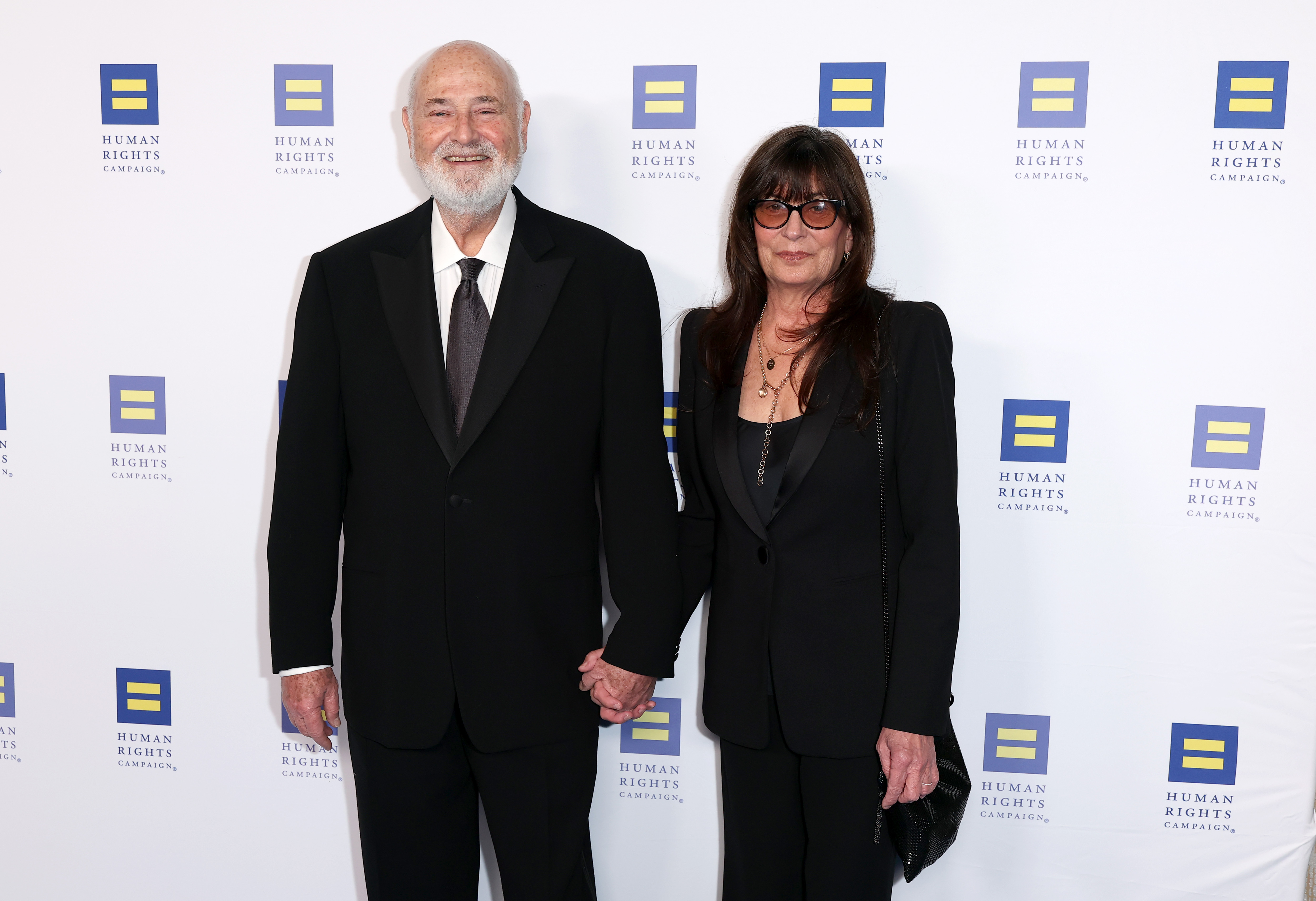Behind the Lens: The Photo Shoot That Transformed Grace Kelly's Image | Vanity Fair

Howell Conant is knee-deep in water. He moves forward, closer, and stands a few meters from his subject.
She’s wearing a huge diving mask and snorkel that hide half her face. Undeterred, Conant shoots, and then shoots some more. He knows and feels that he is about to capture the image he’s been searching for on this Jamaican beach and that all of his effort will have paid off. The relationship between film icon Grace Kelly and this virile 40-something photographer with his refined manners is as transparent as the clear Caribbean water. They don’t know it yet, but this photo shoot will soon be one of Kelly’s most talked-about shoots, and Conant’s work will be admired and envied. She appeared au naturel that day—with wet hair and without any makeup, giving her a certain rebellious look. Conant will long remember that enchanted moment.
It’s April 1955 on a beach in Montego Bay, on the northwest coast of Jamaica. The woman skipping along the hot sand, in a light dress or white shorts and bra, is not yet the princess of Monaco. That would come a year later, on April 19, 1956, an event captured in newsreels and a ceremony broadcast to over 30 million television viewers. Kelly and Prince Rainier would appear on the covers of magazines such as Paris Match, Jours de France, and Life. That fairytale is, at this point, still in the future. In spring 1955, Kelly was likely more focused on her recent best actress win at the Oscars, for her performance in The Country Girl.
A few days earlier, on March 30, she had received the award from William Holden, her co-star in the film. She beat out formidable Hollywood favorites like Judy Garland (nominated for A Star is Born) and Audrey Hepburn (Sabrina). The unremarkable film directed by George Se Seaton was soon forgotten, much like most of his other movies. But Kelly’s performance as a somewhat unkempt and surly wife, married to an alcoholic husband, made an impression.
In recent years, she had made a string of major Hollywood films: High Noon (Fred Zinnemann, 1952), Mogambo (John Ford, 1953), Dial M for Murder, and Rear Window (Alfred Hitchcock, 1954). Most notably, she has just filmed a Technicolor romantic thriller also by Hitchcock: To Catch a Thief, starring Cary Grant and shot at the far end of the Côte d’Azur, in a tiny nation that’s less than one square mile—Monaco. All that was missing from her star status was that famous gold statuette, and now she had one.
But who was Howell Conant, who accompanied Kelly to Jamaica along with her older sister Peggy, who was also a pretty, slender blonde? Kelly had met Conant four months earlier in January, at a shoot for the film magazine Photoplay. Kelly, who by nature tended to take charge of any situation, assured that everything was perfect, right down to the artistic direction. She had chosen the right look, determined the camera angles, and had even encouraged Conant, sometimes somewhat brusquely, to adjust his lighting. The result was worth the effort: on the magazine’s cover, Kelly made an impression with her impeccably styled hair and crimson lipstick. Conant was being auditioned, but he didn’t realize it.
Kelly enjoyed the shoot, and Conant, it appears, did too. After the shoot, Kelly asked Howell to lend her a headband for an interview with the day’s leading Hollywood gossip columnist, Earl Wilson. He agreed, on one condition: that she return it to him personally when she was finished with it. When she met him in his studio a little later, she was immediately drawn to some of his underwater photos. Conant was passionate about the ocean, and so was Kelly. After the attack on Pearl Harbor in 1942, Conant joined the Navy and headed for the Pacific, where his photographs captured the beauty of coral reefs. Conant was undeniably talented and Kelly appreciated the prints.
So Conant wasn’t completely surprised when, a few weeks later, Kelly called on him for this photo shoot in Jamaica. The assignment came from Collier’s magazine, named after its founder, Peter Collier, a pioneer of investigative journalism. The idea was to spend a few days with Kelly, on vacation, without a hairdresser, makeup artist, or stylist. It would be just the star and a photographer, and the magazine would see what resulted from this encounter. With some free time in her schedule and rested after the Oscar frenzy, the hope was that the unusual arrangement would provide a chance for Kelly to reveal some of her true character as a sensual and funny woman, not the icy and aloof figure she was often portrayed as being. For this shoot, she simply wanted to feel confident.
Howell Conant had secretly dreamed of an invitation like this. What better setting could there be than the idyllic beaches of the Caribbean to capture the knowing glances, relaxed attitudes, and coy smiles of Kelly? In the space of a few days, they ran the entire gamut of poses and attitudes: natural portraits and close-ups, ones where she is splashing in the surf and others when she runs along the beach. He captured her strolling in the company of the residents of what was then a modest fishing village, napping on a sofa, or playing with an orange or a cushion. In Remembering Grace, a 168-page tribute to his work and his special relationship with Kelly which was published by Life in 2008, Conant vividly recalls the famous “cushion session.” He wrote then that “when Grace started playing with the cushion and biting it, I started shooting. She was so short-sighted that she couldn’t see 10 feet in front of her, so she followed the sound of my voice as I directed her. I kept telling her, ‘beautiful, beautiful, turn your head, there, keep going like that.’”
And then there was one specific image, with her face emerging out of the water and her shoulders bare. Originally, Kelly had planned a diving session to admire the flora and fauna under the water. But she was in a playful mood on the beach, where she had just surprised Conant and sent him tumbling to the sand. She put on a diving mask that squeezed half of her face and then the snorkel that would allow her to breathe in the warm sea. As for Conant, he tiptoed cautiously to avoid the spiny sea urchins on the sandy bottom. But something wasn’t exactly right. “How about taking off that cumbersome mask and snorkel?” he suggested.
The sun is blazing, the light sublime. Peggy acts as assistant and holds the reflector. But it required at least eight takes to achieve the look that Conant wanted. If you look closely, you can make out a drop of water beading on her ear lobe, a little like an earring delicately placed there. It’s perfect. Conant would have done anything necessary to get such a shot, but he wouldn’t have succeeded if he had tried. During this day in Montego Bay, however, a somewhat strange magic developed between photographer and model. In retrospect, the session is best described as being built around Kelly’s “natural glamour.” In Remembering Grace, Conant practically avoids taking any credit for his work. “You trusted Grace’s beauty,” he recounts modestly. “You knew she wasn’t built of clothes and makeup. In New York, Grace would come to my studio wearing a sweater, skirt, and loafers. In Jamaica, she was no different: her hair pulled back, wearing a simple man’s shirt. This was Grace, natural and unpretentious.” Conant presented the world with the naked truth.
On June 24, the issue of Collier’s with its famous cover shot by Conant hit newsstands. It was an immediate success and quickly became the talk of Hollywood. Conant’s phone was ringing off the hook, with a host of stars—Elizabeth Taylor, Audrey Hepburn, Janet Leigh, Doris Day, and Natalie Wood—all dreaming of the same treatment. Advertisers were also reaching out. From Hollywood to Madison Avenue, his services were sought for campaigns for Revlon and Helena Rubinstein cosmetics, Dan River bath towels, Ford automobiles... Each one had the same request: to use this natural beauty to sell their products.
Conant’s destiny was then linked to that of his famous model and he followed her everywhere. In 1955, he was with her on the set of her penultimate film, The Swan, in which—in an odd if inverted foreshadowing—she played a princess in love with a commoner. He was there in her New York apartment at the end of that year, when she was officially presented to Prince Rainier III and their engagement became official. He had his own cabin aboard the SS Constitution, the transatlantic liner that traveled from New York to Monaco, carrying Kelly to her destiny a week before her civil wedding on April 18, 1956. And later at the palace, at every official Princess Grace event, Conant was there in the shadows, his 35mm camera slung over his shoulder. At his first meeting with Prince Rainier, in that New York Fifth Avenue apartment, Conant would explain that he had discovered a woman he had never seen before. “Jamaica introduced me to the playful Grace, and The Swan to the thoughtful, inner Grace. Now I found myself face to face with a third Grace Kelly, arm in arm with Prince Rainier of Monaco. I was looking at a woman in love.”
Seventy years on, what remains of that shoot in Jamaica and the light-hearted freedom emanating from the glossy pages? What remains of the ingenuous young woman, barefoot and smiling, who at 26 would become a princess corseted in rules of protocol? While most of the people who witnessed this period have of course disappeared, the answers can still be found in the principality.
Louisette Lévy-Soussan knew Princess Grace intimately. She was her private secretary at the Prince’s Palace in Monaco, seeing her every day for almost 19 years. Hired in 1964 to fill in for a month until they found the right permanent person, the young woman with impeccable English was the daughter of a maid and a butler. She would remain in the service of the princess until Grace’s death. One morning in June, I dial her telephone number with some hesitation. Would I be disturbing her and disrupting her morning routine? As it turns out, the 89-year-old is on vacation in the Dolomites. She’s about to set off on a hike along the trails of San Cassiano, near the village of Corvara, at an altitude of 5,043 feet. She’s used to taking the gondola up to the summit. Up there, walking stick in hand, Lévy-Soussan hikes for two or three hours. “I love walking,” she confides. “We’re close to the Austrian border and the landscapes of South Tyrol are magnificent.” When I ask her what images she recalls of Princess Grace, she spontaneously describes one character trait in particular: a natural authority. “She inspired respect and admiration, so much so that she was able to get things done simply, without ever having to insist or raise her voice.” And what about that legendary cold beauty? She almost gets upset: “When I hear her described as cold, it makes me angry. She had a great sense of humor. She loved to laugh and make other people laugh, and she knew how to defuse tense situations in a funny way.” She goes on to explains that Princess Grace loved to repeat limericks—always funny, and sometimes naughty or risqué too. (“She would recite some of them to me with true delight.”).
Beyond their formal beauty, the 1955 shots emanate a kind of generosity. Grace had a desire to give and an interest in the gaze of others. The series of photographs embody an idea that has unfortunately often become meaningless: benevolence. But like someone going through old drawers or opening one nesting Russian doll after the next, an image of Kelly emerges that has been slumbering for years. In 1974, Lévy-Soussan suffered a personal tragedy with the loss of her husband. To take her mind off his death and escape the small world of Monaco for a while, the princess offered to take her to Paris for six months, while her daughters Caroline and Stéphanie went to school. She stayed at the Monaco embassy, then on Rue du Conseiller-Collignon in the 16th arrondissement. “One morning, I received a note at the embassy, saying ‘Don’t come to work today. Tonight we’ll both go and listen to a recital by the pianist Arthur Rubinstein.’ That was the princess.”
But has the freedom that swept through those 1955 images been lost with time? “Was the princess a modern icon?” I ask Lévy-Soussan. For her, the answer is clear: She was a very independent women, but not necessarily a feminist. “She had her charitable causes—for children and against poverty. The question of women’s liberation wasn't as fashionable as it is now even if all those women who did extraordinary things were feminists before their time. She knew very well what she wanted and where she wanted to go.”
I talk to her about Conant and that photo shoot in Jamaica that, of course, took place before she started working for the princess. Still, she remembers Conant very well, as “a very handsome man, tall, athletic-looking, and square-jawed. He regularly came to photograph her, whenever she asked him to. He was one of a group of ‘Hollywood friends.’ I remember above all his extreme kindness to me and the moments of complicity with the princess.”
I ask her to make one last effort to describe the Grace of Monaco she knew. She dives into her memories one last time, hesitates for a moment, and thinks again—before surfacing, without a mask or snorkel. She recalls an interview Grace gave to Playboy. “I thought the way the article ended described her completely. The journalist’s last question was: ‘How would you like to be remembered?’ And the princess replied: ‘I would like to be remembered as a decent human being.’” Lévy-Soussan hastens to add: “In your article, you'll have to leave the word in English—decent. It works better in English.” She is right, it does work better in English.
As princess, Grace never stopped looking for opportunities to breathe, far from the confining rules of protocol and scrutinizing glances. She loved to have fun, and Rainier understood this. Whenever his schedule permitted, he would discreetly take his wife to Le Pirate, a waterfront restaurant in Roquebrune-Cap-Martin. She was particularly fond of the place, for its crazy atmosphere, unbridled music, champagne with cassis, and dessert of red fruit and hazelnut vacherin. Harry Belafonte, Frank Sinatra, Jacques Chirac, Steve McQueen, Josephine Baker, Brigitte Bardot, and Gunter Sachs were also regulars. At such times, the princess was once again Grace Kelly, the young Irish-born actress, America’s sweetheart, who abandoned Hollywood to devote herself to her mission: helping Monaco shine on the international stage.
In early September 1982, Howell Conant was feeling nervously excited. He was about to travel to Monaco to take the official Christmas portrait of the Monegasque royal family. Even if he was already used to these sorts of commissions, it was important that he not forget anything. Besides, it was always a joy to see the princess and it had been a long time. But on September 14, just a few days before his trip to Europe, the news came that Her Serene Highness Princess Grace of Monaco had died in a car accident. On the winding road between Monaco and Roc Agel, the Grimaldis’ “second home,” a road she knew by heart, Princess Grace missed a bend. Her Rover 3 500 tumbled down the slope, ending up 35 meters below. Conant couldn’t believe it, and he decided to fly to the principality.
On September 18, the day of the funeral, the sky was as radiant as the atmosphere was solemn. The television cameras were there, of course. In Monaco’s Notre-Dame-Immaculée cathedral, where Grace and Rainier had married 26 years earlier, celebrities from all over the world paid Grace the final tribute she deserved: Cary Grant, Princess Diana, Empress Farah of Iran, Roberto Rossellini, Danielle Mitterrand, and Nancy Reagan were all there. As was Howell Conant, whose silhouette we can make out, hidden in the back row. He didn’t take a single photo that day.
This story was originally published in Vanity Fair France and translated by John Newton.
How Goop Culture Paved the Way For MAHA
Why Trump Already Has an Upper Hand in His Murdoch Feud
Gwyneth Paltrow’s Biographer Explains Herself
The Scandal Still Haunting Massachusetts
What I Witnessed Inside an ICE Women’s Prison
Inside the Surprising Kennedy-Mitford Connection
The MAGA-Epstein Drama, Explained
What Queen Elizabeth Really Thought of Harry and Meghan
From the Archive: Dating Jeffrey Epstein




